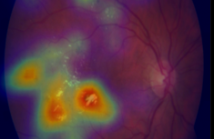
The International Conference on Image Processing (ICIP), sponsored by the IEEE Signal Processing Society, is the premier forum for the presentation of technological advances and research results in the fields of theoretical, experimental, and applied image and video processing. ICIP has been held annually since 1994, brings together leading engineers and scientists in image and video processing from around the world. Visit website.
The flapping flight of bats can serve as an inspiration for flapping-wing air vehicles. Obtaining an understanding of bat flight requires detailed, occlusion-free kinematics data that can only be collected using large numbers of cameras. Here, we have explored the use of low-cost cameras with low frame rates that result in nonlinear, large-baseline motions in image space.
- Categories:
 6 Views
6 Views- Read more about BACT-3D: A LEVEL SET SEGMENTATION APPROACH FOR DENSE MULTI-LAYERED 3D BACTERIAL BIOFILMS
- Log in to post comments
In microscopy, new super-resolution methods are emerging that produce three-dimensional images at resolutions ten times smaller than that provided by traditional light microscopy. Such technology is enabling the exploration of structure and function in living tissues such as bacterial biofilms that have mysterious interconnections and organization. Unfortunately, the standard tools used in the image analysis community to perform segmentation and other higher-level analyses cannot be applied naively to these data.
- Categories:
 14 Views
14 Views- Read more about DEMONSTRATION OF AN HMM-BASED PHOTOREALISTIC EXPRESSIVE AUDIO-VISUAL SPEECH SYNTHESIS SYSTEM
- Log in to post comments
multimedia.zip
- Categories:
 7 Views
7 Views- Read more about PHOTOREALISTIC ADAPTATION AND INTERPOLATION OF FACIAL EXPRESSIONS USING HMMS AND AAMS FOR AUDIO-VISUAL SPEECH SYNTHESIS
- Log in to post comments
In this paper, motivated by the continuously increasing presence of intelligent agents in everyday life, we address the problem of expres-sive photorealistic audio-visual speech synthesis, with a strong focus on the visual modality. Emotion constitutes one of the main driving factors of social life and it is expressed mainly through facial expres-sions. Synthesis of a talking head capable of expressive audio-visual speech is challenging due to the data overhead that arises when con-sidering the vast number of emotions we would like the talking head to express.
- Categories:
 76 Views
76 Views- Read more about End-to-end Learning Binary Representation via Direct Binary Embedding
- Log in to post comments
Learning binary representation is essential to large-scale computer vision tasks. Most existing algorithms require a separate quantization constraint to learn effective hashing functions. In this work, we present Direct Binary Embedding (DBE), a simple yet very effective algorithm to learn binary representation in an end-to-end fashion. By appending an ingeniously designed DBE layer to the deep convolutional neural network (DCNN), DBE learns binary code directly from the continuous DBE layer activation without quantization error.
- Categories:
 11 Views
11 Views- Read more about MOTION FEATURE AUGMENTED RECURRENT NEURAL NETWORK FOR SKELETON-BASED DYNAMIC HAND GESTURE RECOGNITION
- Log in to post comments
Dynamic hand gesture recognition has attracted increasing interests because of its importance for human computer interaction. In this paper, we propose a new motion feature augmented recurrent neural network for skeleton-based dynamic hand gesture recognition. Finger motion features are extracted to describe finger movements and global motion features are utilized to represent the global movement of hand skeleton.
- Categories:
 5 Views
5 Views- Read more about Visual Tracking via Structural Patch-based Dictionary Pair Learning
- Log in to post comments
- Categories:
 5 Views
5 ViewsThis paper presents an efficient convolutional neural net- work (CNN)-based multiple path search (MPS) algorithm to detect multiple spatial-temporal action tubes in videos. With the pass information and the accumulated scores generated by forward message passing, the new algorithm reuses these information to simultaneously find multiple paths in back- ward path tracing without repeating the search process. More- over, to rectify the potentially inaccurate bounding boxes, we also propose a video localization refinement scheme to further boost the detection accuracy.
- Categories:
 14 Views
14 Views- Read more about Deep Joint Discriminative Learning for Vehicle Re-identification and Retrieval
- Log in to post comments
In this paper, we propose a novel vehicle re-identification method based on a Deep Joint Discriminative Learning (DJDL) model, which utilizes a deep convolutional network to effectively extract discriminative representations for vehicle images. To exploit properties and relationship among samples in different views, we design a unified framework to combine several different tasks efficiently, including identification, attribute recognition, verification and triplet tasks. The whole network is optimized jointly via a specific batch composition design.
- Categories:
 21 Views
21 Views
- Read more about WEAKLY-SUPERVISED LOCALIZATION OF DIABETIC RETINOPATHY LESIONS IN RETINAL FUNDUS IMAGES
- Log in to post comments
Convolutional neural networks (CNNs) show impressive performance for image classification and detection, extending heavily to the medical image domain. Nevertheless, medical experts are skeptical in these predictions as the nonlinear multilayer structure resulting in a classification outcome is not directly graspable. Recently, approaches have been shown which help the user to understand the discriminative regions within an image which are decisive for the CNN to conclude to a certain class.
- Categories:
 29 Views
29 Views